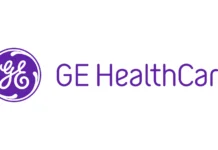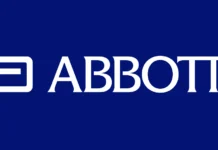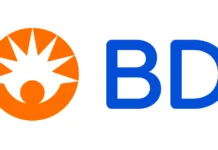The healthcare industry faces mounting pressure to deliver quality care efficiently while managing escalating costs. Among the most challenging administrative processes healthcare organizations grapple with is prior authorization. It is a utilization management tool that, while intended to control costs and ensure appropriate care, has become a significant source of frustration for providers, patients, and healthcare administrators alike.
The Growing Prior Authorization Challenge
Prior authorization requirements have expanded dramatically over the past decade. According to recent American Medical Association surveys, 94% of physicians report that prior authorization delays patient access to necessary care, while 84% say the burden has increased over the past five years. For healthcare management teams, this translates into substantial operational challenges.
Administrative Costs: Healthcare organizations spend an average of 16 hours per physician per week on prior authorization processes.
Patient Experience Impact: Delays in prior authorization approvals lead to postponed treatments, increased patient anxiety, and potential deterioration of medical conditions. All of these factors negatively impact patient satisfaction scores and clinical outcomes.
Staff Burnout: The repetitive, time-consuming nature of prior authorization tasks contributes to administrative staff burnout and turnover. This further strains healthcare organizations’ operational efficiency.
Understanding the Complexity
Prior authorization involves multiple stakeholders including healthcare providers, insurance companies, pharmacy benefit managers, and patients. Each group has different priorities and systems. The process typically requires:
- Clinical documentation gathering and review
- Insurance coverage verification
- Treatment justification based on medical necessity criteria
- Multi-step approval workflows
- Appeals management for denied requests
- Ongoing monitoring and reauthorization
This complexity is compounded by variations in requirements across different insurance plans, frequent policy changes, and the need to navigate multiple payer portals and communication channels.
Strategic Approaches to Prior Authorization Optimization
Healthcare organizations seeking to improve their prior authorization processes should consider a comprehensive approach that addresses both immediate operational needs and long-term strategic goals.
1. Process Standardization and Workflow Optimization
Successful prior authorization management begins with standardizing internal processes. Healthcare organizations should map current workflows, identify bottlenecks, and implement consistent procedures across departments. This includes establishing clear roles and responsibilities, creating standardized documentation templates, and developing escalation protocols for complex cases.
Key elements of effective workflow optimization include:
- Implementing dedicated prior authorization teams with specialized training
- Creating patient-specific prior authorization tracking systems
- Establishing proactive communication protocols with patients about potential delays
- Developing decision trees for common authorization scenarios
2. Technology Integration and Automation
Modern healthcare management requires leveraging technology to streamline administrative processes. Prior authorization technology solutions can significantly reduce manual work while improving accuracy and speed. Effective technology integration should focus on:
- Electronic Prior Authorization (ePA): Implementing systems that electronically submit and track authorization requests. This reduces paperwork and improves processing
- Clinical Decision Support: Integrating tools that help providers determine when prior authorization is required and what documentation will be needed.
- Real-time Eligibility Verification: Ensuring patient coverage and benefit information is accurate before initiating prior authorization requests.
- Analytics and Reporting: Providing insights into approval rates, processing times, and denial patterns to inform continuous improvement efforts.
3. Payer Relationship Management
Building strong relationships with insurance companies and understanding their specific requirements can significantly improve prior authorization success rates. Healthcare organizations should:
- Assign dedicated staff to maintain regular communication with key payers
- Participate in payer education sessions and policy update meetings
- Develop payer-specific documentation templates and submission guidelines
- Establish preferred communication channels for complex cases
4. Staff Training and Development
Investing in comprehensive training programs ensures staff members have the knowledge and skills necessary to navigate complex prior authorization requirements effectively. Training should cover:
- Understanding insurance plan variations and coverage criteria
- Proper documentation techniques and medical necessity justification
- Effective communication strategies with payers and patients
- Technology system utilization and troubleshooting
- Appeals and grievance procedures
The Role of Specialized Solutions
Many healthcare organizations are discovering that partnering with specialized prior authorization service providers can offer significant advantages. These partnerships allow healthcare teams to focus on clinical care while ensuring administrative processes are handled efficiently by experts who understand the nuances of different payer requirements.
Specialized solutions typically offer:
- Dedicated teams with extensive prior authorization expertise
- Advanced technology platforms designed specifically for authorization management
- Established relationships with major insurance companies
- Comprehensive reporting and analytics capabilities
- Scalable services that adapt to organizational growth and changing needs
Conclusion
Prior authorization remains a critical component of healthcare cost management. However, its implementation does not have to be a barrier to quality patient care. Healthcare organizations that take a strategic approach to prior authorization optimization by combining process improvements, technology adoption, staff development, and strategic partnerships can significantly reduce administrative burden while maintaining or improving patient satisfaction and clinical outcomes.
The key is recognizing that prior authorization is not just an administrative function. It is a strategic operational component that impacts the entire healthcare delivery system. By investing in comprehensive solutions and maintaining a focus on continuous improvement, healthcare organizations can transform prior authorization from a necessary burden into a competitive advantage.
Healthcare leaders seeking to transform their prior authorization operations can benefit from specialized expertise and proven methodologies. Contact Agadia to discuss how tailored solutions can reduce administrative burden while improving patient outcomes. Visit www.agadia.com for more information


















